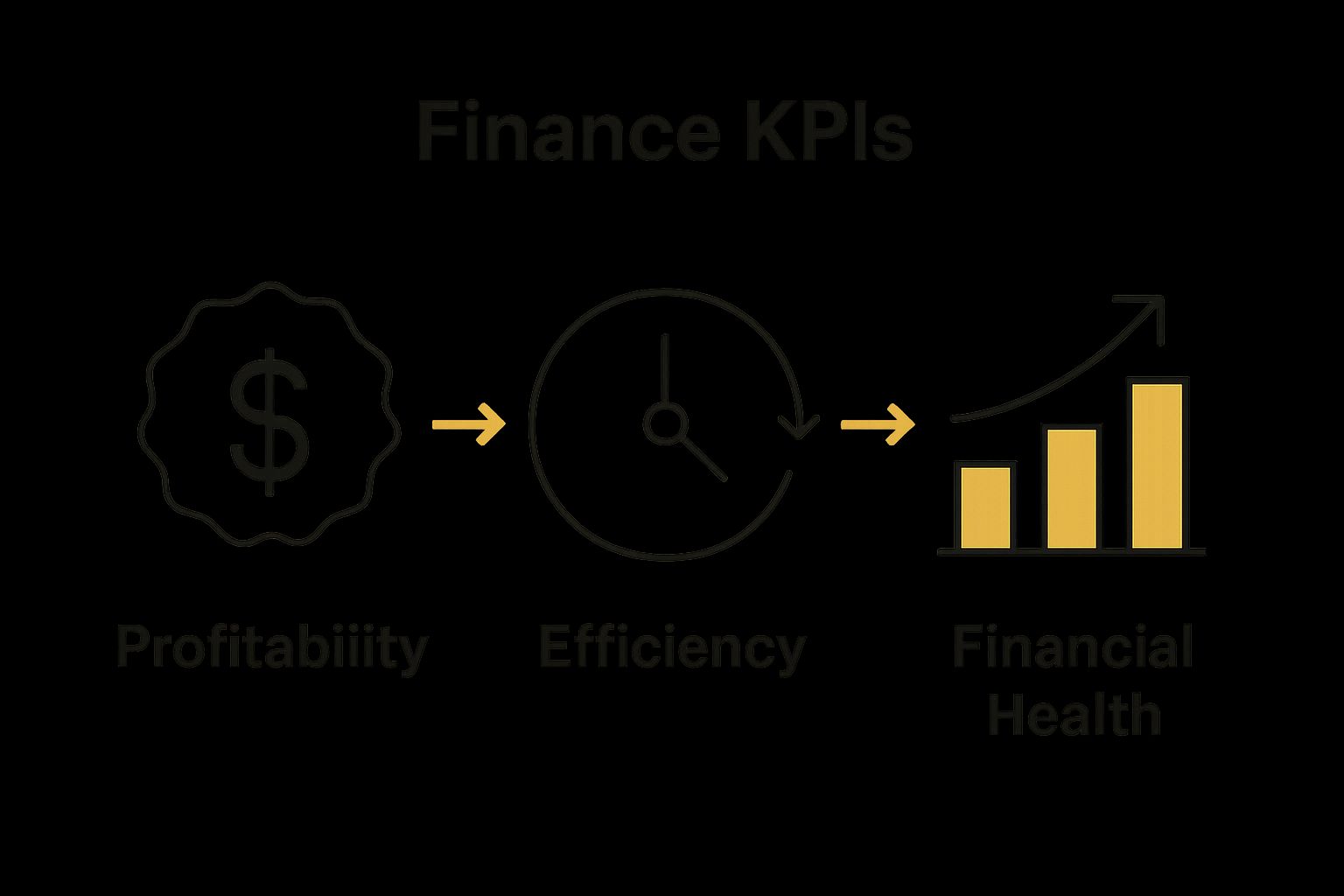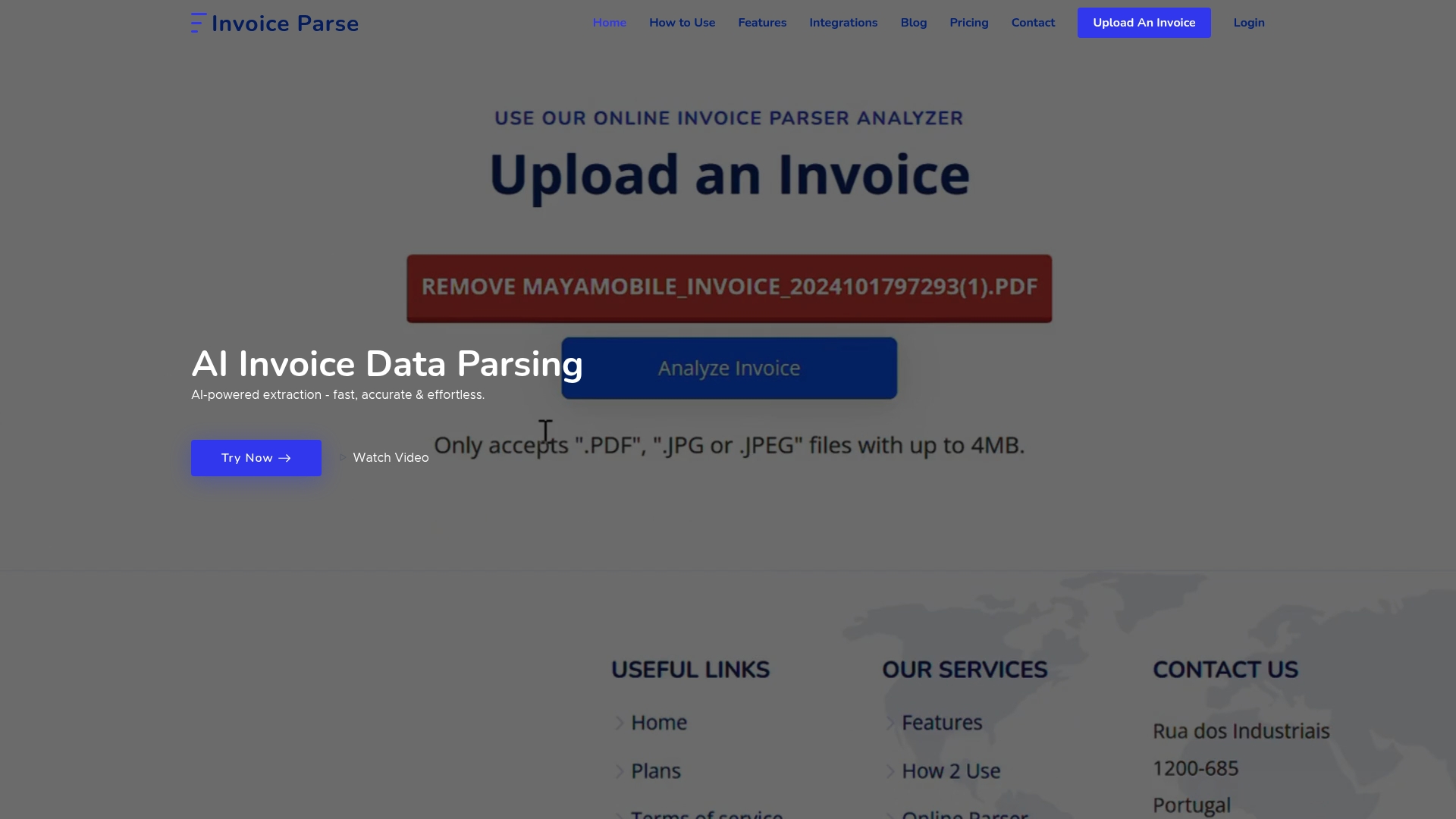Finance departments track numbers all day and for good reason. Companies that monitor their financial KPIs are 70 percent more likely to anticipate market changes and adapt quickly. That sounds like common sense at first. But most people assume these metrics are only for accountants or CFOs. The real surprise is that finance KPIs can completely change how any organization plans, grows, and stays ahead of the competition—and most teams have no idea what they’re missing.

Understanding Finance Department KPIs for Success
Table of Contents
- What Are Finance Department Kpis And Their Purpose?
- Why Finance Department Kpis Matter For Businesses
- Key Types Of Finance Department Kpis Explained
- How Finance Department Kpis Affect Decision Making
- Real-World Examples Of Effective Finance Kpis
Quick Summary
| Takeaway | Explanation |
|---|---|
| Finance KPIs track financial health. | They provide measurable insights into financial operations, enabling leaders to assess performance and make informed decisions. |
| KPIs support proactive financial management. | Monitoring these indicators helps identify risks early, allowing organizations to plan and mitigate potential issues effectively. |
| Align KPIs with organizational goals. | Effective KPIs should reflect broader business objectives, ensuring that financial strategies support overall company vision and strategy. |
| Utilize specific KPIs for profitability. | Key profitability metrics like Net Profit Margin and ROI provide critical insights into a company’s operational efficiency and earning potential. |
| Implement operational efficiency KPIs. | Metrics such as Accounts Receivable Turnover help businesses streamline processes and improve resource use, enhancing financial performance. |
What are Finance Department KPIs and Their Purpose?
Finance department Key Performance Indicators (KPIs) serve as critical measurement tools that enable organizations to track, analyze, and optimize their financial performance. These quantifiable metrics provide a comprehensive snapshot of a company’s financial health, helping leaders make data driven decisions and strategic interventions.
Understanding KPI Fundamentals
At their core, finance department KPIs are specific numerical measurements that reflect the effectiveness and efficiency of financial operations. Research from Harvard Business School indicates that these indicators go beyond simple number tracking and represent strategic insights into an organization’s financial ecosystem.
Key characteristics of effective finance department KPIs include:
- Specificity in measuring exact financial parameters
- Alignment with broader organizational goals
- Ability to provide actionable business intelligence
- Measurability through quantifiable data points
Strategic Purpose of Financial KPIs
Finance department KPIs play a multifaceted role in organizational management. They function as diagnostic tools that help leadership understand current financial performance, predict potential challenges, and develop proactive strategies. By monitoring these indicators, finance teams can:
- Identify potential financial risks before they escalate
- Track progress towards financial objectives
- Benchmark performance against industry standards
- Support informed decision making across the organization
These performance indicators cover diverse aspects of financial operations, including profitability ratios, liquidity measurements, operational efficiency, and strategic financial planning. Each KPI serves as a crucial lens through which financial health and potential growth opportunities can be evaluated.
Understanding and implementing robust finance department KPIs transforms raw financial data into meaningful strategic insights, enabling organizations to navigate complex economic landscapes with greater precision and confidence.
The following table summarizes the main categories of finance department KPIs discussed in the article, along with their definitions and typical examples.
| KPI Category | Definition | Typical Examples |
|---|---|---|
| Profitability KPIs | Measure the company’s ability to generate earnings relative to expenses and invested capital | Net Profit Margin, ROI, Gross Profit Margin, EBITDA |
| Operational Efficiency KPIs | Assess how effectively a company uses resources and manages processes | Accounts Receivable Turnover, Inventory Turnover, Operating Expense Ratio |
| Liquidity KPIs | Indicate the organization’s ability to meet short-term obligations | Current Ratio, Quick Ratio, Working Capital Ratio |
| Strategic Financial Health KPIs | Evaluate long-term financial resilience and competitive positioning | Debt to Equity Ratio, Cash Conversion Cycle |
Why Finance Department KPIs Matter for Businesses
Finance department Key Performance Indicators (KPIs) are far more than simple numerical metrics. They represent the strategic heartbeat of an organization, transforming raw financial data into actionable business intelligence that drives sustainable growth and competitive advantage.
Strategic Decision Making and Organizational Resilience
KPIs enable businesses to move beyond reactive financial management towards proactive strategic planning. According to research from McKinsey, organizations that consistently track and analyze their financial KPIs are 70% more likely to anticipate market changes and adapt quickly.
Key strategic benefits include:
- Rapid identification of financial strengths and potential vulnerabilities
- Enhanced capacity for scenario planning and risk mitigation
- Improved resource allocation and investment decisions
- More accurate forecasting of financial trajectories
Financial Health and Competitive Positioning
Companies that implement robust KPI tracking gain significant competitive advantages. These indicators provide a comprehensive view of financial performance, allowing leadership to benchmark against industry standards and make data driven strategic choices.
For small to medium enterprises looking to optimize their financial management, KPIs offer critical insights into operational efficiency, profitability, and growth potential. They serve as early warning systems, highlighting potential financial challenges before they become critical problems.

By translating complex financial data into clear, measurable indicators, finance departments can communicate their value more effectively, aligning financial strategies with broader organizational objectives and creating a culture of transparency and continuous improvement.
Key Types of Finance Department KPIs Explained
Finance department KPIs are complex instruments that provide nuanced insights into organizational financial performance. By understanding different categories of KPIs, businesses can develop a comprehensive approach to financial monitoring and strategic planning.

Profitability and Financial Performance KPIs
Research from Deloitte highlights the critical importance of tracking profitability indicators. These KPIs focus on measuring an organization’s ability to generate earnings relative to its expenses and capital invested.
Key profitability KPIs include:
- Net Profit Margin
- Return on Investment (ROI)
- Gross Profit Margin
- Operating Cash Flow
- Earnings Before Interest, Taxes, Depreciation, and Amortization (EBITDA)
Operational Efficiency and Liquidity KPIs
Operational efficiency KPIs measure how effectively a company utilizes its resources and manages financial processes. These indicators help organizations identify potential areas of improvement and streamline financial operations. Learn more about digital transformation in finance to enhance these metrics.
Critical operational and liquidity KPIs encompass:
- Accounts Receivable Turnover
- Current Ratio
- Quick Ratio
- Inventory Turnover
- Operating Expense Ratio
Strategic Financial Health Indicators
Beyond immediate financial performance, some KPIs provide deeper insights into long term strategic positioning. These indicators help leadership understand the organization’s financial resilience, growth potential, and competitive landscape.
Strategic financial health KPIs evaluate aspects such as debt management, investment effectiveness, and overall financial sustainability. By continuously monitoring these metrics, finance departments can provide actionable intelligence that supports informed decision making and proactive financial management.
How Finance Department KPIs Affect Decision Making
Finance department KPIs function as sophisticated navigational tools that transform raw financial data into strategic insights, enabling leadership to make informed, data driven decisions across multiple organizational dimensions.
Translating Metrics into Strategic Guidance
Research from CFO.com reveals that effective KPIs serve as critical communication bridges between financial complexity and actionable business strategy. They convert abstract numerical data into clear, comprehensible directives that guide executive decision making.
Key strategic decision influencing mechanisms include:
- Identifying potential financial risks before they escalate
- Providing real time performance snapshots
- Enabling comparative analysis against industry benchmarks
- Supporting resource allocation strategies
- Highlighting potential investment opportunities
Predictive Analysis and Proactive Management
Finance department KPIs extend beyond retrospective reporting, offering predictive capabilities that allow organizations to anticipate and prepare for future financial scenarios. Learn more about data visualization in finance to understand how these insights can be effectively communicated.
By tracking specific performance indicators, finance teams can:
- Forecast potential revenue trajectories
- Assess organizational financial resilience
- Develop scenario based strategic plans
- Evaluate potential market expansion opportunities
- Mitigate potential financial vulnerabilities
Organizational Alignment and Performance Optimization
KPIs serve as critical alignment mechanisms, ensuring that financial strategies synchronize with broader organizational objectives. They create a common language of performance across different departments, enabling more cohesive and integrated decision making processes.
The transformative power of finance department KPIs lies in their ability to convert complex financial data into clear, actionable intelligence. By providing leadership with precise, contextualized insights, these metrics become essential tools for navigating complex business landscapes with confidence and strategic precision.
Real-World Examples of Effective Finance KPIs
Real world applications of finance department KPIs demonstrate how these metrics translate theoretical frameworks into practical strategic tools that drive organizational performance and financial success.
Liquidity and Financial Stability KPIs
Research from CIMA Global highlights the critical importance of tracking short term financial health indicators. Companies leverage specific KPIs to ensure robust financial stability and operational resilience.
Practical examples of liquidity KPIs include:
- Current Ratio (measuring short term asset liquidity)
- Quick Ratio (assessing immediate cash convertibility)
- Cash Conversion Cycle (evaluating operational cash efficiency)
- Working Capital Ratio (determining operational financial flexibility)
- Debt to Equity Ratio (understanding financial leverage)
Profitability Performance Tracking
Profitability KPIs provide granular insights into an organization’s earning potential and financial efficiency. Understand how machine learning is transforming financial analysis to enhance these performance measurements.
Key profitability KPI examples in practice:
- Net Profit Margin (measuring overall earning efficiency)
- Gross Profit Margin (evaluating production cost effectiveness)
- Return on Investment (ROI)
- Earnings Per Share (EPS)
- Operating Profit Margin
Operational Efficiency Metrics
Operational efficiency KPIs help organizations identify potential improvements in financial processes, resource allocation, and overall organizational productivity. These metrics go beyond traditional financial measurements, offering comprehensive views of organizational performance.
By implementing these real world KPI examples, finance departments can transform raw financial data into actionable strategic intelligence.
Here is a comparison table highlighting key finance department KPIs, what they measure, and the organizational benefit of tracking each.
| KPI Name | What It Measures | Organizational Benefit |
|---|---|---|
| Net Profit Margin | Proportion of revenue remaining after all expenses | Indicates overall earning efficiency |
| ROI (Return on Investment) | Efficiency and profitability of an investment | Helps assess effectiveness of expenditures |
| Accounts Receivable Turnover | Frequency of collecting outstanding receivables | Improves cash flow and operational efficiency |
| Current Ratio | Ratio of current assets to current liabilities | Assesses short-term financial stability |
| Debt to Equity Ratio | Proportion of company financing from debt vs equity | Monitors financial leverage and risk |
| Inventory Turnover | Rate at which inventory is sold and replaced | Optimizes inventory management and resource use |
Transform Finance KPIs Into Action With Automated Invoice Data Extraction
Are you struggling to turn your finance department KPIs into clear, actionable strategies because your data is scattered or slow to gather? In the article, you read how crucial reliable financial data is for tracking profitability, operational efficiency, and strategic performance. But manual invoice processing and inconsistent data entry can sabotage those KPIs, leaving your team frustrated and stuck in reactive mode. Invoice Parse empowers you to overcome these barriers by delivering instant, accurate data extraction for every invoice—so you can shift from number crunching to confident, data-driven decision making.

Put your finance KPIs to work today. Start with Invoice Parse and see how easy it is to drag, drop, and transform invoices into structured data for your favorite analytics tools. Discover the difference automated data extraction makes for financial management success, and subscribe now to enhance your finance department’s speed, accuracy, and insight. Don’t let manual processes stall your strategic potential—experience smarter finance operations now.
Frequently Asked Questions
What are the key types of Finance Department KPIs?
Finance Department KPIs generally fall into three categories: profitability, operational efficiency, and strategic financial health indicators. Identify which type aligns with your specific goals to evaluate your financial performance effectively.
How can I implement finance department KPIs in my organization?
To implement finance KPIs, first, define the specific metrics that reflect your financial goals. Then, track these metrics consistently and adjust your strategies based on the insights gained, aiming for a review cycle of at least quarterly.
How do Finance Department KPIs impact decision-making?
Finance Department KPIs provide actionable insights that help leadership make informed decisions about resource allocation and risk management. Focus on regularly reviewing these KPIs to enhance your organization’s strategic planning and responsiveness.
What are examples of profitability KPIs?
Common profitability KPIs include Net Profit Margin, Gross Profit Margin, and Return on Investment (ROI). Track these metrics to measure your organization’s earning efficiency and make adjustments to improve profitability over time.
Why is tracking liquidity KPIs important for financial health?
Tracking liquidity KPIs, such as the Current Ratio and Quick Ratio, is essential to measure a company’s short-term financial stability. Ensure your organization maintains these ratios within industry benchmarks to support ongoing operational resilience.
How can Finance KPIs help in identifying financial risks?
Finance KPIs enable organizations to spot potential financial risks by analyzing trends and variances in key metrics. Regularly review your KPIs to anticipate risks and develop proactive strategies to mitigate them, ideally within a monthly assessment schedule.
